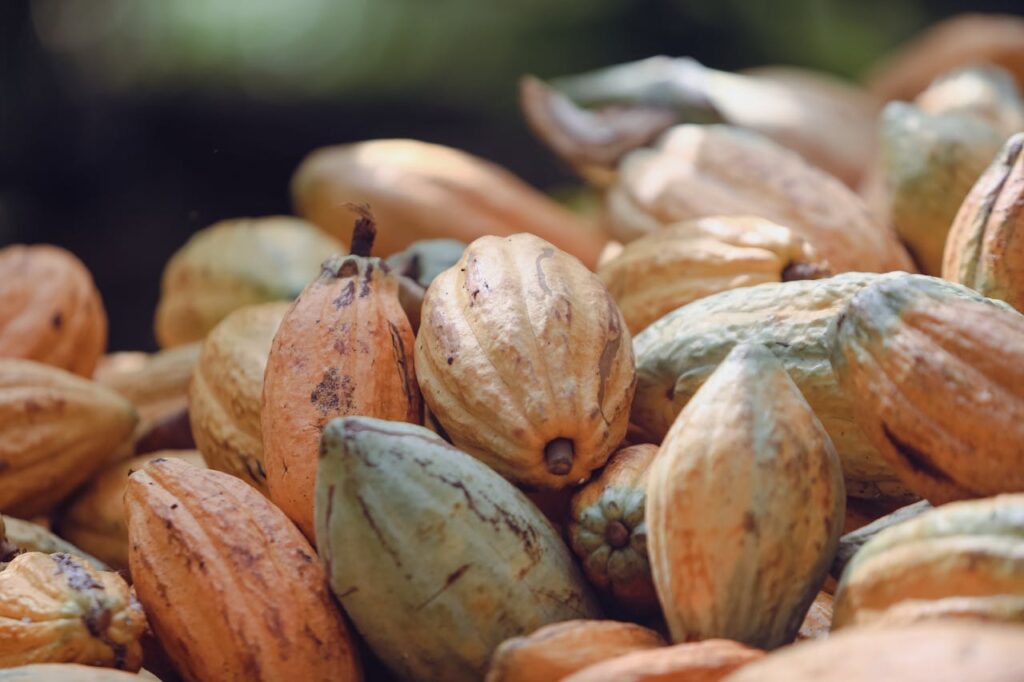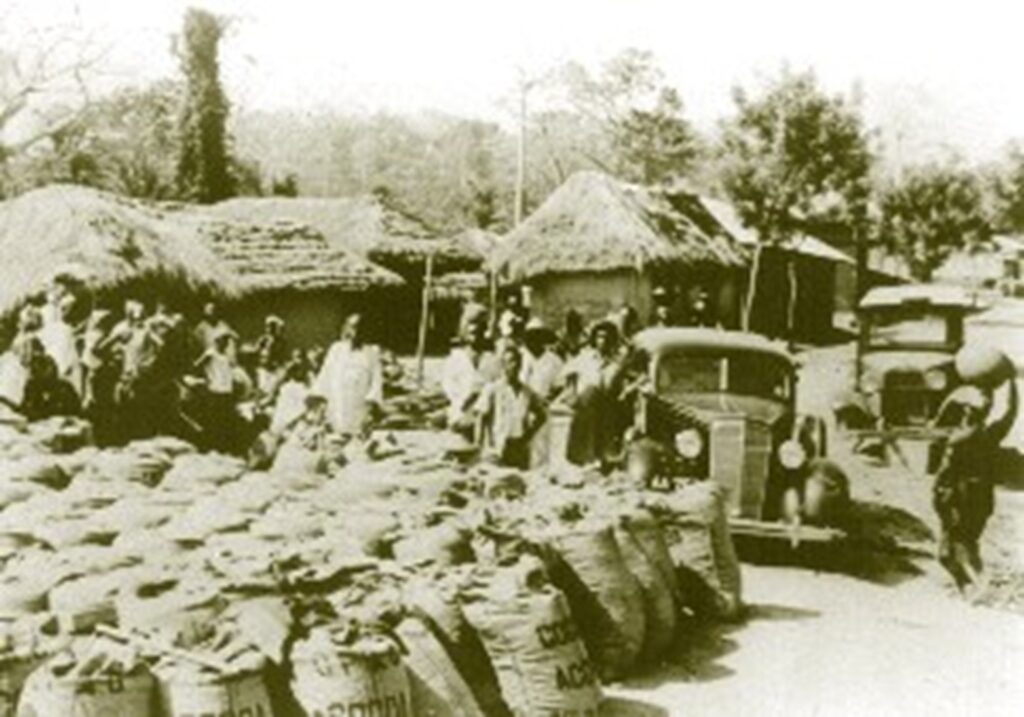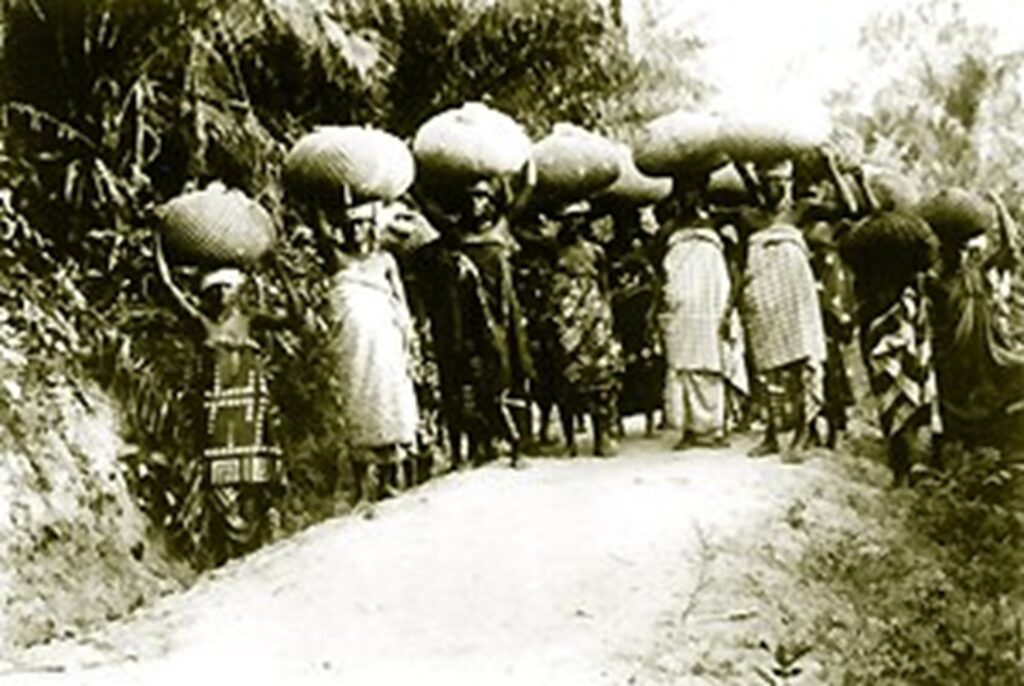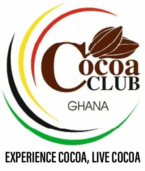The History of Cocoa in Ghana
From Ancient Origins to Global Significance

The journey of cocoa is a testament to cultural heritage, global trade, and economic transformation.
Cocoa originated from around the headwaters of the Amazon in South America. Its cultivation and value spread in ancient times throughout central and Eastern Amazonian and northwards to Central America.
Cocoa beans were used by the Native Americans to prepare a chocolate drink or chocolate and also as a form of currency for trading purposes and payment of tribute to the king.
Unearthing the rich history of Ghana’s golden crop
1.
Cocoa’s Journey to Europe
After the conquest of Central America in 1521, Hernan Cortez and his Conquistadores took a small cargo of cocoa beans to Spain in 1528, together with utensils for making the chocolate drink. By 1580 the drink had been popularized in the country and consignments of cocoa were regularly shipped to Spain.
The popularity of chocolate as a drink spread quickly throughout Europe, reaching Italy in 1606, France in 1615, Germany in 1641 and Great Britain in 1657.
The Spread of Large-Scale Cultivation
Large-scale cultivation of cocoa was started by the Spanish in the 16th century in Central America. It spread to the British, French and Dutch West Indies (Jamaica, Martinique and Surinam) in the 17th century and to Brazil in the 18th century.
From Brazil it was taken to SÃO Tome and Fernando Po (now part of Equatorial Guinea) in 1840; and from there to other parts of West Africa, notably the Gold Coast (now Ghana), Nigeria and the Ivory Coast.
Cocoa in the Gold Coast (Ghana)
The available records indicate that Dutch missionaries planted cocoa in the coastal areas of the then Gold Coast as early as 1815, whilst in 1857 Basel missionaries also planted cocoa at Aburi Botanical Gardens.
It was, however, Tetteh Quarshie, a Ghanaian blacksmith, who is credited with the introduction of cocoa into the then Gold Coast, after he returned from Fernando Po in 1879, with Amelonado cocoa pods and established a farm at Akwapim Mampong. Farmers from all parts of the country bought pods from him to establish their own farms in their respective areas.
Sir William Bradford Griffith, the then Governor, also brought pods and seedlings of cocoa from São Tome in 1886 and distributed them freely to farmers.
Sir William Bradford Griffith, the then Governor, also brought pods and seedlings of cocoa from São Tome in 1886 and distributed them freely to farmers.

(Copyright, Basel Mission Archives circa 1930s, Switzerland.)

(Copyright, Basel Mission Archives circa 1890, Switzerland.)
The Modern Cocoa Industry in Ghana
Ghana Cocoa Board (COCOBOD) was established in 1947 as the main government agency responsible for the development of the cocoa industry.
The main cocoa growing areas in Ghana are Ashanti, Brong Ahafo, Eastern, Volta, Central and Western regions.
Ghana is the world’s second largest producer of cocoa beans and it is known for its high quality cocoa beans.
2.
The Socio-Economic Impact of Cocoa in Ghana
The economy of Ghana depends very much on cocoa as the country’s main cash crop, accounting for about one-third of its export earnings and the second biggest export after gold. It supports the livelihood of about 720,000 cocoa farmers who cultivate the crop mostly on small family farms of between 2-3 hectares. Cocoa is usually grown in the shade of rainforest trees, though the trend is shifting towards partial shade cultivation. Even though cocoa is a cash crop, cocoa farmers also cultivate food crops for their families’ upkeep and for sale for income generation.
Cocoa farms in Ghana currently produce about 40% of their yield potential due to old cocoa trees, and lack of information and resources for farmers. In addition, the youth are generally not interested in cocoa farming. The average cocoa farmer is about 50 years old. This low productivity means less money for the farmer, less income for Ghana (as it depends on cocoa exports) and less cocoa for chocolate companies.
Ghana hit a milestone when it harvested 1 million metric tonnes of cocoa beans in the 2010/2011 season (which was initially targeted for 2012/2013). This feat was largely attributed to the effective application of fertilizers and pesticides, government spraying teams, the distribution of improved hybrid seedlings and scientific research, among others.
Cocoa is the mainstay of the economy of Ghana. It is the second leading foreign exchange earner accounting for about 30% of export revenue and about 57% of agricultural export revenue. It directly and indirectly employs about 2 million people and contributes a large chunk of Ghana’s Gross Domestic Product (GDP) with a share of 8.1% in 2006. In addition to generating foreign exchange, government revenue and household incomes, cocoa production expands economic activities in the rural communities.
It funds the construction of roads in cocoa growing areas (Cocoa Roads Improvement Project) and the construction of health infrastructure. Moreover, COCOBOD annually invests about 2 million Ghana Cedis in cocoa scholarships from the Primary to Tertiary level for children of cocoa farmers and to date, about 2,500 beneficiaries have passed through the scheme. The private sector also invests in the cocoa industry through initiatives like the Cadbury Cocoa Partnership, the COCOBOD/Armajaro Traceable Foundation and Kuapa Kokoo.
Without cocoa, there would be loss of jobs, revenue, foreign exchange and the economy would shrink, infrastructure development would stall and many children would drop out of school. Ghana is indeed cocoa and cocoa is Ghana. Cocoa is the lifeblood of Ghana’s economy and the heartbeat of Ghana’s socio economic development.
The Modern Cocoa Industry in Ghana
In addition, the cocoa seed naturally has several benefits or derivatives. Talk of chocolate production, creams, soap, drinks and many more other products that can be created from its own plants. Due to these benefits, cocoa is a very much demanded product on the world market. Cocoa producing countries therefore generate a lot of foreign exchange from the export of the beans.
Some countries with the touch of a little technology are above to process the cocoa beans into refined products which are exported in other countries for higher profit. Ghana for instance exports both the raw beans and refined products like chocolate to other nations for profits. This has gone a long way to boost the nation’s economy.
